Posted by Elena del Valle on June 28, 2011
Information provided by Event Partner

SES San Francisco Conference and Expo
August 15-19, 2011
San Francisco, CA
www.connectedmarketingweek.com
HispanicMPR Subscribers – SAVE 20% when you use 20MPR
Insight and Advice from Digital and Interactive Marketing Leaders.
This year, the SES San Francisco Conference & Expo will be hosted at Connected Marketing Week, August 15-19, at The Moscone West. SES San Francisco brings together the most important voices online to talk about the industry’s most pressing developments – everything from Google Panda to Youtube LIVE. Get 5 days of education, inspiration and conversation with experts throughout the interactive space, covering every essential topic: email, display, mobile, search, social media, video and more. With more than 6,000 marketers, programmers, designers, small business owners, and affiliates expected to attend – this IS the interactive event of the year.
Save 20% off your registration. Enter priority code 20MPR
Sessions Include:
– Insider Tips to Ad Optimization
– Automating Social Media
– Crossing the Digital Divide: The Leap from Search to Display
– HTML5: The Interactive Social Web
– Advanced Paid Search Tactics
– SEO Competitive Analysis
For more details visit: www.sessanfrancisco.com
Join the discussion: #SESSF
Posted by Elena del Valle on June 27, 2011

Juan Carlos Basabe, director, International Sales, Viajes El Corte Ingles
Photo: Enrique Tubio
Viajes El Corte Ingles, Inc., the United States arm of El Corte Ingles, S.A., a Spanish travel services company, recently expanded its operations by opening new headquarters in Miami, Florida, and launching tripcruises.com, an English language cruise oriented website.
The company first established operations in the United States in March 1987. In 1997, Viajes El Corte Ingles opened a branch office in Miami to serve clients coming from Spain to Florida and corporate clients already in Florida.
Viajes El Corte Ingles has as many as 25 employees depending on the time of year. The company targets travelers with “medium to high purchasing power,” according to Juan Carlos Basabe, director of International Sales, Viajes El Corte Ingles, who responded to questions by email.
Although decision makers at Viajes El Corte Ingles did not conduct research prior to the recent expansion they relied on their belief that there are “increasing numbers of U.S. visitors to Europe and particularly Spain.”

tripcruises.com homepage – click to enlarge
The company moved its headquarters to Miami this year because of the city’s strong position as a cruise port which was was appropriate for the new website tripcruises.com; to offer its services to the multinational Spanish and European companies with offices in Florida; and because of the “huge Spanish-speaking clientele in Florida.”
Posted by Elena del Valle on June 24, 2011
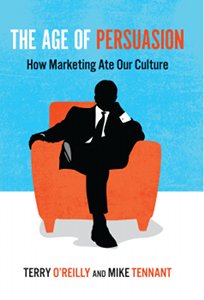
The Age of Persuasion book cover
Photos: Counterpoint Berkeley
Based on a radio program by the same name The Age of Persuasion How Marketing Ate Our Culture (Counterpoint, $26) was written by Terry O’Reilly, the host of the program, and Mike Tenant, who with O’Reilly produced, researched and wrote the content of the program. Although the book is written in the first person it is the work of both contributors. At the beginning, they point out some of the things they have in common beyond their knowledge of the ad world and radio; they are both natives of Ontario, Canada of Irish ancestry who started writing ads at private radio stations in the early 1980s.
In the book, they address the difference between marketing (the process of promoting, distributing and selling) and advertising (exposing the public to the product or service through paid ads); branding (the promise of a product or service); new technologies; clutter; radio audience; billboards; telemarketers; and movie theater ads among other related issues.
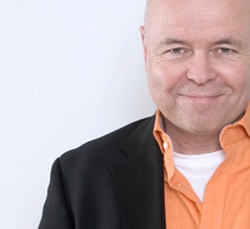
Terry O’Reilly, coauthor, The Age of Persuasion
The 324-page hardcover book, published in 2009, is divided into 12 chapters: Clutter, Breaking The Contract, The Rise and Fall and Rise of Branded Entertainment, Persuading Yoots, The YouTube Revolution, Guerillas in Our Midst, The Lesson of Clark Gable’s Undershirt, The Language of Persuasion, A Sense of Persuasion, The Human Face of Persuasion, The Long and Short of It, and The Wall of Cynicism.

Mike Tennant, coauthor, The Age of Persuasion
O’Reilly has experience as a copywriter and director and is the cofounder of Pirate, an audio production company based in New York and Toronto. A resident of Kitchener, Ontario Tennant is the cocreator and writer of The Age of Persuasion, a Canadian Broadcasting Corporation radio series.

Click to buy The Age of Persuasion
Posted by Elena del Valle on June 22, 2011
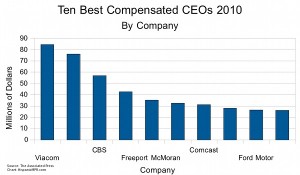
While many people worry about the state of the economy, unemployment (5 million jobs were lost in 2009 alone), outsourcing overseas and inflation a miniscule group is thriving in corporate America. Among some Standard & Poor’s 500 companies chief executive officers (CEOs), especially those in the entertainment industry, life is increasingly good. That is because they were compensated (e.g. salary, bonuses, perks, stock options) more handsomely in 2010 than in 2007 when the economy and the stock market were thriving and unemployment was half of what it is now.
Their executive compensation was 24 percent higher and in some cases much more than a year earlier. The average reward for CEO work in 2010, according to an Associated Press analysis based on Equilar (an executive compensation firm) data, was $9 million. That was the highest average CEO compensation on record since the media company began its analysis in 2006 (what are the chances it was higher prior to that?).
Employee salaries did not remain stagnant over the same time period. Pay increased 3 percent or twice the rate of inflation for workers in 2010, reaching an average of $40,500. To put that into perspective the average wage of an employee was less than one-half of one percent of what the typical CEO was paid, according to that analysis.
According to a The Washington Post article published this week, “The evolution of executive grandeur — from very comfortable to jet-setting — reflects one of the primary reasons that the gap between those with the highest incomes and everyone else is widening.” The article goes on to say that in 2008 the top tenth of one percent of the population received more than 10 percent of the personal income ( $1.7 million or more) in the country, including capital gains, and the top one percent accounted for more than 20 percent.
An analysis of tax returns by economists Jon Bakija, Adam Cole and Bradley T. Heim points to executives from companies in a broad range of industries. Of the highest earners 41 percent were executives, managers and supervisors at non-financial companies. Almost half of them made their income from their ownership in privately-held firms, 18 percent were managers at financial firms or financial professionals. Almost 60 percent fell into those two categories.
The Associated Press analysis indicates some executives received a significantly higher compensation package than in previous years. For example, the CEO of Viacom (owner of MTV, Nickelodeon and Paramount) was the best paid from the list in 2010. He had a benefits package worth $84.5 million or two and a half times better than the previous year. Six of the top ten paid CEOs were from the media or entertainment industries. They are the CEOs of CBS, Discovery Communications, Comcast, Walt Disney, Time Warner and Viacom.
The companies with the top 10 compensated CEOs, according to the Associated Press research, are (in descending order): Viacom, Occidental Pretroleum, CBS, Discovery Communications, Freeport McMoran Copper and Gold, Stanley Black and Decker, Comcast, Walt Disney, Ford Motor, and Time Warner.
Posted by Elena del Valle on June 20, 2011

Vivemejor.com, one of the sites where marketers placed ads targeting Latinos – click to enlarge
Marketing efforts by large personal care products companies increasingly have a broad reach, according to Hispanics and Personal Care US January 2011, a Mintel report released earlier this year. That company’s researchers concluded marketers of well known brands are presenting their products to Hispanic consumers in English or Spanish in print, online or televised ads.
When targeting Hispanics marketers for brands like Dove, Degree, Pantene, Aveeno and Colgate are relying on online marketing strategies and social networking sites such as Facebook and Twitter, and websites like Walmart.com, Latina.com, or Starmedia.com thinking some members of this market segment may not be watching television or reading print magazines.
An example is ViveMejor.com, Unilever’s Spanish-language sister site to complement its online presence at MakingLifeBetter.com. The site promotes personal care products Suave shampoo, Dove, Pond’s, and Axe next to beauty tips, social networking links, and food recipes for Unilever food brands.
Another example is the promotional efforts of Axe deodorant featuring humorous and sexy Axe deodorant and shower gel television ads in Spanish and English boosting the newcomer brand’s popularity. One in three Latino men are thought to purchase the product.
Anti dandruff shampoo brand marketers for Head & Shoulders placed ads in People en Español, Selecciones, Siempre Mujer and TV y Novelas in early 2008 to the tune of $157,250. Hoping to reach acculturated Latinas aged 18 to 24 on mainstream television marketers for Kotex’s U line produced ads featuring women of color. The survey was conducted online in August 2010 among 534 U.S. Hispanic respondents aged 18 and older.
Posted by Elena del Valle on June 17, 2011
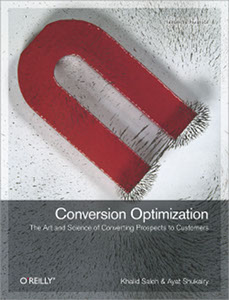
Conversion Optimization book cover
Photos: O’Reilly Media, Inc.
The internet has changed our lives in many ways. One of those is the way we gather and access information and, in some instances, buy and sell products and services. While the medium provides sellers direct access to potential buyers there are so many ads online surfers have become immune to them in many ways. Online potential customers are exposed to hundreds and, according to one source, as many as 3,000 ads each day.
Website owners and managers strive to drive traffic and more importantly sales to their space. As the internet has matured a specialty area has developed to help this process, conversion optimization. Experts in this field seek to maximize the number of sales related to the total number of visitors to a website.
In Conversion Optimization The Art and Science of Converting Prospects to Customers (O’Reilly Media, $34.99) Khalid Saleh, who has more than 12 years of experience in conversion optimization, and Ayat Shukairy, who dedicates her time to conversion optimization, website usability and online persuasion, explore the topic and share their tested and tried principles.
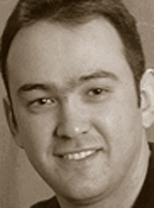
Khalid Saleh, coauthor, Conversion Optimization
They describe the Conversion Framework, a process they developed in 2007 and have refined since to encompass eight principles. The first six address a visitor’s experience at a website and the likelihood he or she will remain there. They are: understanding what website visitors seek, developing a website that inspires trust, being aware of the buying stages, addressing fears and related issues, incentives, and user engagement. The final two address testing and making a long term commitment to the process.

Ayat Shukairy, coauthor, Conversion Optimization
The 250-page softcover book published earlier this year is divided into two sections, online marketing and the Conversion Framework, and ten chapters: The Journey from Clicks to Sales, The Numbers Behind Your Website, Getting to Know Your Customers: Developing Personas, From Confidence to Trust, Understanding the Buying Stages, FUDs, Appealing with Incentives, Engagement, Testing: The Voice of Visitors, and Be Iterative.
Saleh and Shukairy are cofounders of Invesp, a conversion optimization company. Saleh, according to hi biography, has helped generate an average improvement of 65 percent in conversion rates for his customers. Shukairy is the company’s lead conversion rate strategist and also boasts of 65 percent conversion rates in her biography.

Click to buy Conversion Optimization
Comments:
Filed Under: Books
Posted by Elena del Valle on June 13, 2011
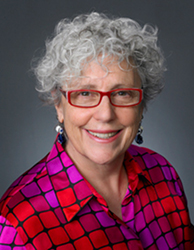
Diane Katz, Ph.D., president, The Working Circle Teambuilding, Inc.
Photo: The Working Circle Teambuilding, Inc.
A podcast interview with Diane Katz, Ph.D., president, The Working Circle Teambuilding, Inc., is available in the Podcast Section of Hispanic Marketing & Public Relations, HispanicMPR.com. During the podcast, she discusses how to have difficult conversations with Elena del Valle, host of the HispanicMPR.com podcast.
A Savannah, Georgia based organization consultant and author of Win at Work The Everybody Wins Approach to Conflict Resolution (see Consultant shares conflict resolution tactics for work environment) Diane has a doctorate degree in Conflict Resolution from Union Institute. Previously she was a human resources executive at American Express, Chase Bank, KPMG Peat Marwick, and Alexander & Alexander.
Diane’s experience spans 40 years. During that time, has spoken to groups in the United States, Europe, Mexico, and Canada about decision-making, conflict resolution, organization development, and professional development.
To listen to the interview, scroll down until you see “Podcast” on the right hand side, then select “HMPR Diane Katz, Ph.D.” click on the play button below or download the MP3 file to your iPod or MP3 player to listen on the go, in your car or at home. To download it, click on the arrow of the recording you wish to copy and save it to disk. The podcast will remain listed in the June 2011 section of the podcast archive.
Posted by Elena del Valle on June 10, 2011
Information provided by Event Partner

SES Toronto Conference and Expo
June 13-15, 2011
www.sestoronto.com
Search, social media, behavioral targeting, mobile, and video are just a few of the areas marketers have struggled to keep pace with within the last year. Advancements like Google Instant, Yahoo’s merger with Bing, and Twitter’s launch of Promoted Tweets, are just a few of the technological advancements which marketers have had to absorb.
Helping marketers keep pace with a quickly developing digital landscape, the SES Conference & Expo series brings in experts from throughout the industry, providing insight, case studies, and tangible tactics for businesses to employ.
SES Toronto one of our most comprehensive shows of the year, attracts up to 2,000 attendees annually from leading brands across the business landscape. Attendees join to connect with the digital community at large, looking to build in-house skills in an array of digital marketing fields. View our agenda to discover what this year’s sessions will be covering.
SAVE 20% when you enter 20MPR. Register Now!
What you will Learn
– Learn how search engines rank web pages and optimize yours to out-rank competitors
– Discover new methods of link building to keep your brand in front of your customers
– Increase traffic via organic listings and avoid “spam” penalties
– Optimize and rank better with pay-per-click campaigns
– Improve user experience and increase conversions by testing and tuning landing pages
– Track performance and maximize ROI using free and paid analytics software
– Network with peers and experts to learn the latest tips and trends
Sneak Preview on what’s ahead:
Day 1: Amber Mac, Consultant, TV Host, Author and Journalist
Day 2: Tracy Smith, Vice-President, Performance Marketing & Go-To-Market, Yellow Pages Group
This year’s agenda will include:
Content Marketing Optimization
Key Points in Launching a Global Website
Local 2.0: the Evolution of Search
Enterprise Level SEO
What Every Paid Search Advertiser Needs to Know About the Bing/Yahoo Alliance
For a complete agenda visit: http://www.sestoronto.com/agenda.php
Posted by Elena del Valle on June 10, 2011
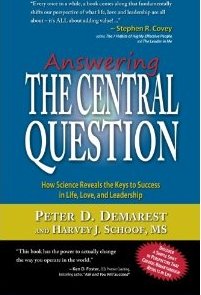
Answering The Central Question book cover
Photos: News and Experts
Making mistakes is part of being human, some would say. Yet most people feel disappointment and even embarrassment when they discover they made a mistake, and strive to make fewer mistakes in the future.
“When it hits us that we’ve made a mistake, we always have that instant of ‘Wow, that was stupid, what was I thinking?’ before we move on and try to solve the problem we’ve inadvertently caused,” said Peter Demarest, a life coach. “I refer to the elimination of that space of time between when we screw up and the time we realize we’ve screwed up as ‘practical enlightenment.’ For the past dozen years or so, I’ve been studying mind-brain science to see if there is a way to help us think better so we make fewer mistakes and create a better life.”
He and Harvey J. Schoof, MS coauthored Answering The Central Question How Science Reveals the Keys to Success in Life, Love and Leadership (Heart Lead Publishing, $21.95), a 230-page softcover book published this year to address the possible choices and behaviors readers can pursue that will result in the best value.
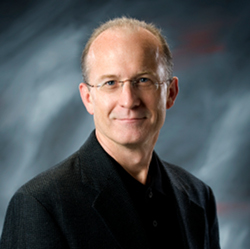
Peter Demarest, coauthor, Answering The Central Question
Demarest believes it is possible to do more than reduce mistakes. He believes that through science-based techniques people can dramatically improve how they think, make choices, act, and react without having to fix their so-called weaknesses. He derived these ideas from research in neuro-axiology, a combination of brain science and value science.
According to the authors, answering The Central Question is about more than self centered pursuits like making more money or being the best leader; they believe it is about creating the best value in business, life, relationships, and family. They believe readers can improve their performance and that successful people bring success to others through a leadership message that enriches their lives. The concepts and ideas they propose, they are convinced, have the potential to transform lives and the world in the long term in the way that the Renaissance changed the world in the past.
“Axiology,” Demarest said, “is the name of a fascinating science about how our value perceptions influence our thoughts, choices, actions, and reactions. It’s also about how value actually gets created in the world and in our lives.”
The book is divided into nine chapters: Introduction; Value, Values and Value Judgements; Neuroscience; Axiology, Philosophy and Science; Applied Axiology; Axiogenics, Applied Neuro-Axiology; The Valuegenic Organization; More Possibilities; and Final Thoughts.
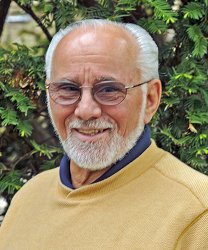
Harvey J. Schoof, coauthor, Answering The Central Question
Demarest is a co-founder and president of Axiogenics. According to his biography, he discovered the connection between axiology or value science and neuroscience or brain science. He has spent more than seven years researching, developing, and testing the technology. Schoof, a founding partner of Axiogenics, LLC, has worked as a rehabilitation counselor, manager, human resources staff person, and university instructor of management and organizational communication.

Click to buy Answering The Central Question
Comments:
Filed Under: Books




























